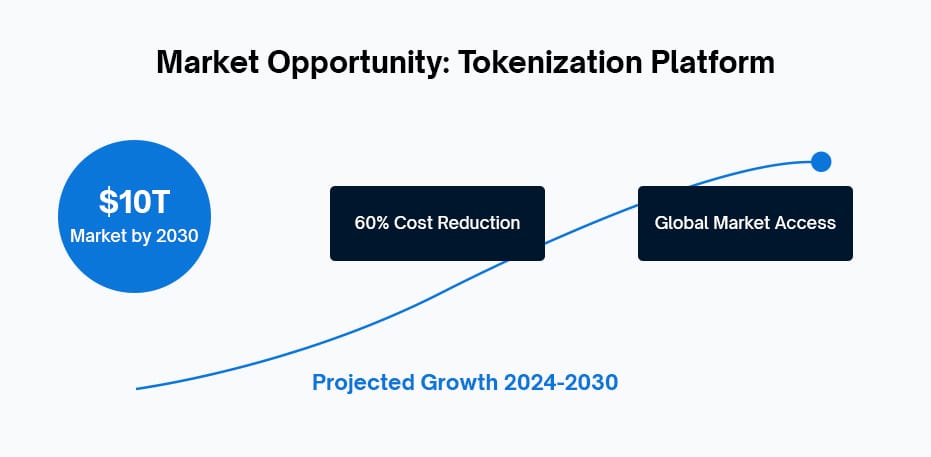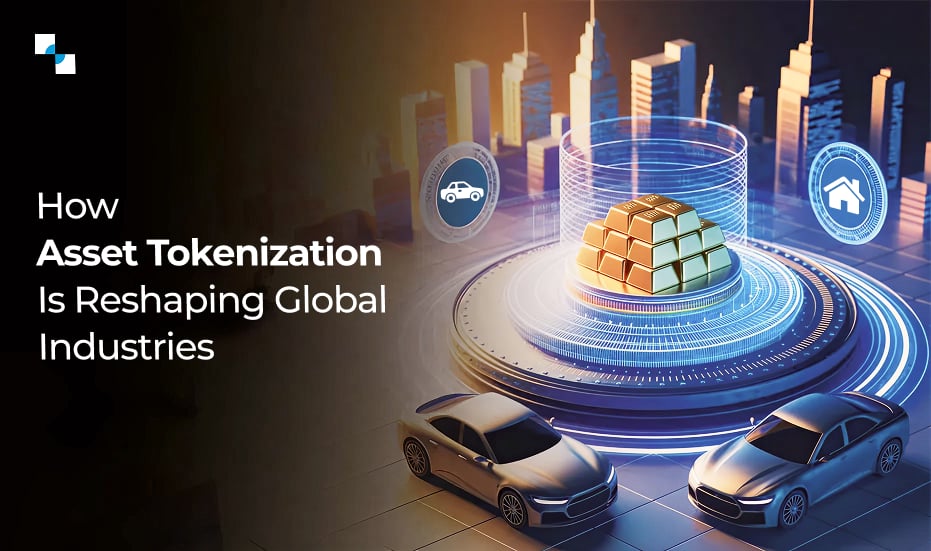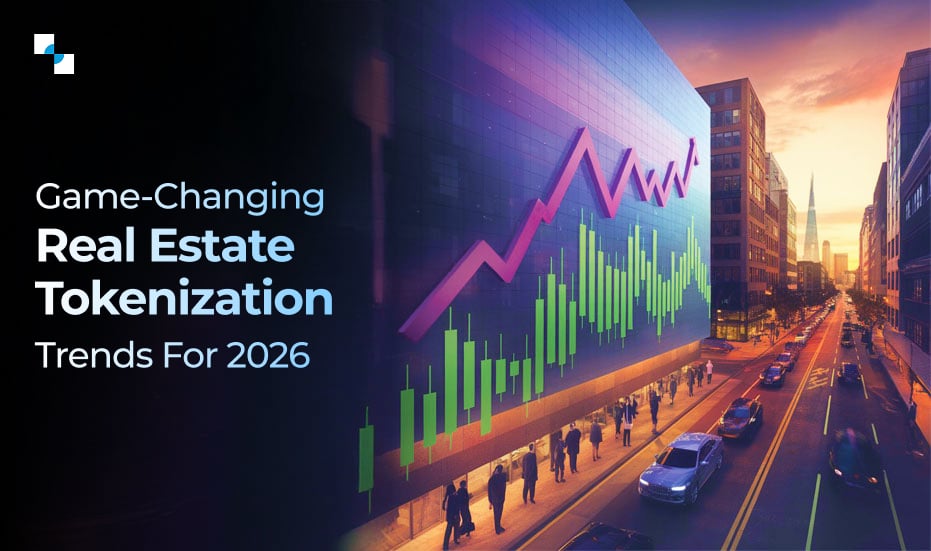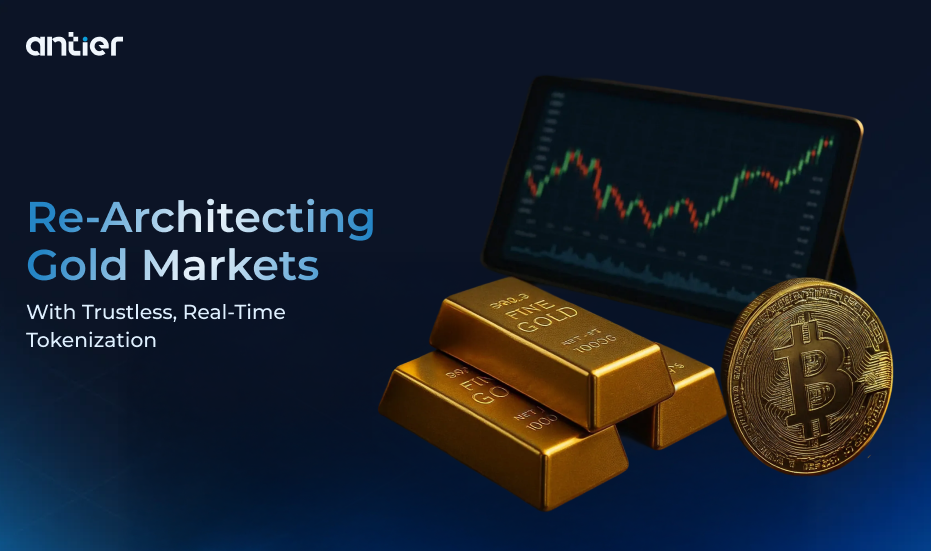So, you’ve decided to implement the White-Label Tokenization Platform for your business! While the tokenization platform is the perfect medium to participate in the broad RWA financial market and expand your reach to global investors, a thorough understanding to make an informed decision is crucial. But with so many options available, how do you evaluate which platform is best for your business?
This guide will walk you through key components of the White Label Tokenization Platform —from essential features and customization options to the cost of ownership, so you can make an informed decision.
Why Do Businesses Need the White Label Tokenization Platform?
To launch tokenization services businesses, require a tokenization platform but building it from scratch can take a lot of time and resources. The White label tokenization platform offers a ready-to-deploy solution that any business can customize according to their goals and launch quickly while staying competitive in the global marketplace.

A recent study by Roland Berger clearly states that the tokenized asset market is projected to grow to over $10 trillion by 2030. This underscores the importance of choosing the right tokenization platform.
With the already-built platform, a business can cut down the development cost, and focus on its growth, innovation, and serving its customers. They can just rebrand it to match their logo, colors, and overall style. This means they can offer tokenization services while maintaining their unique identity without the headache of creating everything from scratch. Getting bogged down by the technical details. To know more about the platform benefits, read our previous blog.
White Label Tokenization Platform: Essential Components to Look For
To tap into the tokenization benefits (like security, efficiency, and digital asset management), a robust white-label tokenization platform should offer a solid foundation of core features. Here’s what to look for:
1. Core Infrastructure
The backbone of any tokenization platform lies in its core infrastructure. Ensure the platform you choose includes:
Token Creation Tools
- Intuitive interfaces for creating both fungible (e.g., cryptocurrencies) and non-fungible tokens (NFTs).
- Pre-built templates for common token types (e.g., utility tokens, security tokens).
- Flexibility to customize token parameters (e.g., supply, distribution rules).
Asset Registration System
- A streamlined process for registering real-world assets (e.g., real estate, art, or securities).
- Secure storage for asset documentation and ownership records.
- Transparent tracking of asset ownership and transaction history.
Smart Contract Management
- Pre-built smart contract templates for common use cases.
- Testing environments to ensure contracts function as intended.
- Easy deployment options to minimize technical hurdles.
2. Advanced Features
Modern tokenization platforms go beyond the basics. Look for these advanced capabilities:
Multi-Asset Support
- Ability to tokenize diverse asset classes (e.g., real estate, commodities, intellectual property).
- Tools to manage multiple token types simultaneously.
- Dashboards to track performance across different asset classes.
Compliance Tools
- Built-in KYC (Know Your Customer) and AML (Anti-Money Laundering) checks to ensure regulatory compliance.
- Automated reporting tools to meet local and international regulations.
- Rule-based trading restrictions to enforce compliance (e.g., limiting trades to accredited investors).
Must Customization Options White Label Tokenization Platform
A white-label tokenization platform should allow you to customize the solution to your brand and business needs. Here’s what to consider:
Branding and Design
The platform should reflect the business brand identity. Look for:
- Customizable colors, logos, and user interface (UI) elements.
- Ability to create branded landing pages and marketing materials.
- Flexibility to modify the user experience (UX) to align with your audience’s preferences.
Technical Flexibility
The business will evolve, and so should the platform. Ensure the platform offers:
- Scalability to handle growing transaction volumes and user bases.
- APIs and integrations to connect with existing business systems (e.g., CRM, ERP).
- Modular architecture to add new features or workflows as needed.
Understanding the Total Cost of Ownership for Tokenization Platform
When evaluating a White Label RWA tokenization platform, it’s crucial to look beyond the upfront costs. Here’s a breakdown of the expenses to encounter:
Initial Costs:
- Platform License: The base fee for accessing the platform.
- Setup and Installation: Costs for configuring the platform to your specifications.
- Initial Customization: Expenses for branding, UI/UX design, and workflow adjustments.
- Staff Training: Investment in training your team to use the platform effectively.
Ongoing Costs:
- Subscription Fees: Monthly or annual fees for platform access.
- Transaction Fees: Costs per transaction, which can vary based on volume.
- Blockchain Network Fees: Gas fees for executing transactions on the blockchain.
- Support and Maintenance: Regular costs for technical support and system updates.
Hidden Costs:
- Security Audits: Periodic audits to ensure the platform remains secure.
- Emergency Support: Costs for resolving critical issues outside regular support hours.
- Updates and Upgrades: Fees for major platform updates or new feature releases.
- Additional Customization: Expenses for future modifications as your business evolves.
Technology Integration Requirements for White-Label Platform
A good White Label tokenization platform should seamlessly integrate with the existing tech stack. Key considerations include:
Blockchain Network
Ensure the platform supports popular blockchain networks like:
- Ethereum
- Binance Smart Chain
- Polygon
- Other enterprise-grade blockchains.
Wallet Integration
Look for compatibility with widely used wallets such as:
- MetaMask
- Ledger
- Trust Wallet
- Custom wallet solutions
Security Features
Security is non-negotiable. Your platform should include:
- Two-factor authentication (2FA) for user accounts.
- End-to-end encryption for data protection.
- Regular security audits to identify vulnerabilities.
- Backup systems to prevent data loss.
White Label Tokenization Platform: Implementation Process
The implementation of a tokenization platform typically involves three phases:
Planning (1-2 Weeks)
- Define your business requirements and goals.
- Select the features and customization options you need.
- Assemble a team to oversee the implementation.
Setup (2-4 Weeks)
- Install and configure the platform.
- Conduct initial testing to ensure everything works as expected.
- Integrate the platform with your existing systems.
Training (1-2 Weeks)
- Train your staff on how to use the platform.
- Provide documentation and resources for ongoing reference.
- Run practice sessions to familiarize your team with the system.
Common Challenges Come in the Journey and How to Overcome Them
While tokenization offers numerous benefits, it’s not without its challenges. Be prepared for:
- Technical Learning Curves: Ensure your team receives adequate training and support.
- Integration Issues: Work closely with the platform provider to resolve compatibility problems.
- Regulatory Compliance: Stay updated on local and international regulations to avoid legal pitfalls.
- User Adoption: Educate your customers and stakeholders about the benefits of tokenization to drive adoption.
Business Benefits of Choosing the White Label Tokenization Platform
Investing in a white-label tokenization platform can deliver significant advantages:
Cost Savings
With the Tokenization platform, businesses can:
- Automate manual processes to reduce operational costs.
- Eliminate paperwork and streamline transactions.
- Lower fees compared to traditional asset management systems.
Business Growth
It becomes easy to:
- Enter new markets faster by digitizing assets.
- Attract tech-savvy customers and investors.
- Gain a competitive edge with innovative solutions.

Making Final Decision: Key Questions to Ask
Before committing to a platform, ask these critical questions:
- Does the platform offer all the features you need?
- Can it scale as your business grows?
- Is the total cost of ownership within your budget?
- Does it meet your security and compliance requirements?
Red Flags to Watch For
- Providers with limited experience or poor customer reviews.
- Basic or outdated security features.
- Unclear pricing structures or hidden fees.
- Lack of responsive customer support.
Next Steps
To move forward:
- List Your Requirements: Identify your must-have features and customization needs.
- Compare Platforms: Evaluate multiple providers based on features, costs, and support.
- Request Demos: Test the platforms to see how they align with your business processes.
- Check References: Speak to existing customers to gauge their satisfaction.
Choose Smart Path to Tokenization with Antier’s White Label Platform
Choosing the right White-Label Tokenization Platform is a strategic decision that can significantly impact your business’s success. With the tokenized asset market projected to surpass $10 trillion by 2030, the time to act is now.
At Antier, we don’t just offer a platform—we deliver a future-ready, customizable solution that empowers your business to stand out. From end-to-end customization and built-in regulatory compliance to advanced security features and proven expertise, we provide everything you need to launch, scale, and succeed in the tokenization space.
Remember, the cheapest option isn’t always the best. Focus on value, scalability, and security to ensure a successful tokenization journey.

Ready to take the next step?
Start by defining your requirements and exploring your options today. With Antier as your partner, you’re not just adopting a platform—you’re embracing a strategic advantage in the tokenization revolution. So, are you ready to transform your vision into reality?








